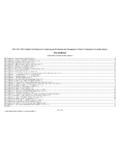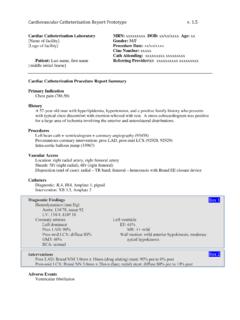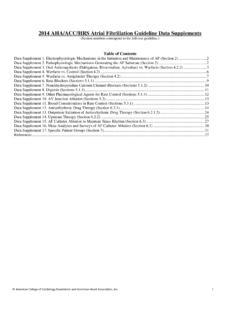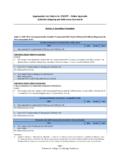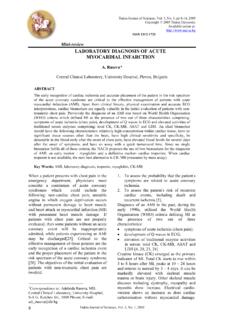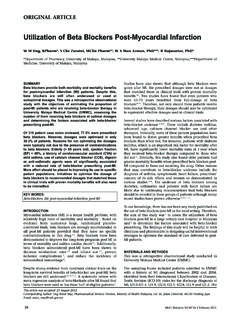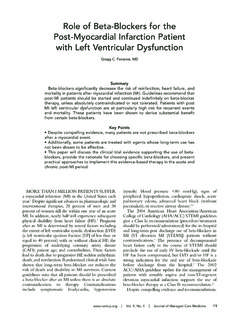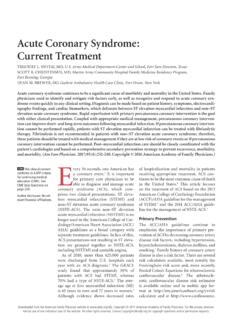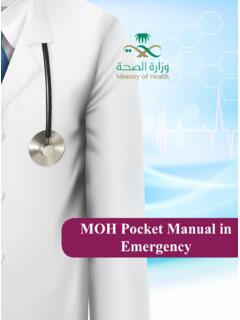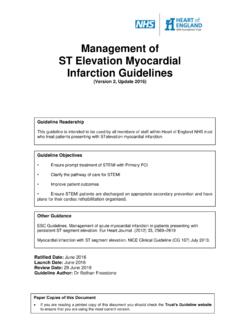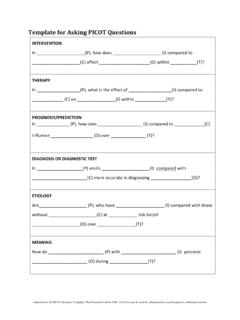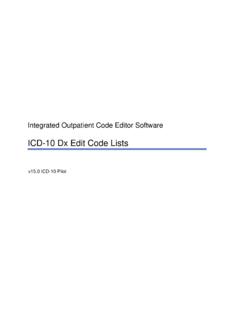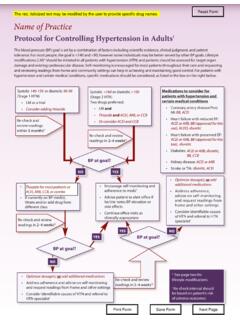Transcription of Management of Patients With Unstable Angina/ Non–ST ...
1 ACCF/AHA Pocket GuidelineManagement of Patients WithUnstable Angina/ Non ST-Elevation myocardial Infarction(Adapted from the 2007 ACCF/AHA Guideline and the 2011 ACCF/AHA Focused Update)Downloaded From: on 02/20/2013 BInitial E/MHospital CareDischarge/Post-DischargeRevasculariz ation 2011 American College of Cardiology Foundation and the American Heart Association, following material was adapted from the 2011 ACCF/ AHA Focused Update Incorporated Into the ACC/AHA 2007 Guidelines for the Management of Patients with Unstable Angina/ Non ST-Elevation myocardial Infarction.
2 (J Am Coll Cardiol 2011;57:e215 367). This pocket guideline is available on the Web sites of the American College of Cardiology ( ) and the American Heart Association ( ).For a copy of the full report or published executive summary, visit ACC/AHA 2007 Guidelines for the Management of Patients with Unstable Angina/ Non ST-Elevation myocardial Infarction (J Am Coll Cardiol 2007;50:e1-e157) and the 2011 ACCF/AHA Focused Update (J Am Coll Cardiol 2011;57:1920-1959).For copies of this document, please contact Elsevier Inc. Reprint Department, email: phone 212-633-3813; fax : Multiple copies, modifications, alterations, enhancement and/or distribution of this document are not permitted without the express permission of the American College of Cardiology Foundation.
3 Please contact Elsevier s permission department at From: on 02/20/2013 Initial E/MHospital CareRevascularizationDischarge/Post-Disc hargeContents1. Introduction ..32. Initial Evaluation and Management ..6A. Clinical Assessment ..6B. Early Risk Stratification ..7C. Immediate Management ..113. Early Hospital Care ..13A. Anti-Ischemic Therapy ..13B. Initial Conservative Versus Initial Invasive Strategies (UPDATED) ..15C. Antiplatelet and Anticoagulant Therapy (UPDATED) ..20D. Risk Stratification ..284. Hospital Discharge and Post-Hospital Discharge Care.
4 30A. Medical Regimen ..30B. Convalescent and Long-Term Medical Therapy and Secondary Prevention (UPDATED) ..325. Coronary Revascularization (see 2011 PCI and CABG Guidelines) ..45 Downloaded From: on 02/20/20132 Downloaded From: on 02/20/201331. IntroductionCoronary artery disease is the leading cause of death in the United States. Unstable angina (UA) and the closely related condition non ST-segment elevation myocardial infarction (MI) (NSTEMI) are very common manifestations of this disease and are responsible for approximately million hospitalizations in the United States each year.
5 UA and NSTEMI are examples of acute coronary syndrome (ACS), which is characterized by an imbalance between myocardial oxygen supply and demand. The most common cause is the reduced myocardial perfusion that results from coronary artery narrowing caused by a nonocclusive thrombus that has developed on a disrupted atherosclerotic plaque. UA and NSTEMI are considered to be closely related conditions whose pathogenesis and clinical presentations are similar but of differing severity; they differ primarily in whether the ischemia is severe enough to cause sufficient myocardial damage to release detectable quantities of a marker of myocardial customary American College of Cardiology Foundation/American Heart Association (ACCF/AHA) classification of recommendations and levels of evidence is used and displayed in Table Downloaded From: on 02/20/20134 Hospital CareTable 1.
6 Applying Classification of Recommendations and Level of Evidence LeveL AMultiple populations evaluated*Data derived from multiple randomized clinical trials or meta-analysesLeveL BLimited populations evaluated*Data derived from a single randomized trial or nonrandomized studiesLeveL CVery limited populations evaluated*Only consensus opinion of experts, case studies, or standard of careCLAss IBenefit >>> RiskProcedure/Treatment shOuLD be performed/ administeredn Recommendation that procedure or treatment is useful/effectiven sufficient evidence from multiple randomized trials or meta-analysesn Recommendation that procedure or treatment is useful/effectiven Evidence from single randomized trial or nonrandomized studiesn Recommendation that procedure or treatment is useful/effectiven Only expert opinion, case studies.
7 Or standard of careCLAss IIaBenefit >> RiskAdditional studies with focused objectives neededIT Is REasOnabLE to per-form procedure/administer treatmentn Recommendation in favor of treatment or procedure being useful/effectiven some conflicting evidence from multiple randomized trials or meta-analysesn Recommendation in favor of treatment or procedure being useful/effectiven some conflicting evidence from single randomized trial or nonrandomized studiesn Recommendation in favor of treatment or procedure being useful/effectiven Only diverging expert opinion, case studies, or standard-of-careshouldis recommendedis indicatedis useful/effective/beneficialsuggested phrases for writing recommendations is reasonablecan be useful/effective/beneficialis probably recommended or indicatedSIzE of TREATMENT EffECTE stimAtE oF CErtAinty (PrECision)
8 OF trEAtmEnt EFFEC ttreatment/strategy A is recom-mended/indicated in preference to treatment Btreatment A should be chosen over treatment BComparative effectiveness phrases treatment/strategy A is probably recommended/indicated in preference to treatment Bit is reasonable to choose treatment A over treatment BDownloaded From: on 02/20/20135* Data available from clinical trials or registries about the usefulness/efficacy in different subpopulations, such as sex, age, history of diabetes, history of prior myocardial infarction, history of heart failure, and prior aspirin use.
9 A recommendation with Level of Evidence B or C does not imply that the recommendation is weak. Many important clinical questions addressed in the guidelines do not lend themselves to clinical trials. Although randomized trials are unavailable, there may be a very clear clinical consensus that a particular test or therapy is useful or effective. For comparative effectiveness recommendations (Class I and IIa; Level of Evidence A and B only), studies that support the use of comparator verbs should involve direct comparisons of the treatments or strategies being IIbBenefit RiskAdditional studies with broad objectives needed.
10 Additional registry data would be helpfulProcedure/Treatment May bE COnsIDEREDn Recommendation s usefulness/efficacy less well established n Greater conflicting evidence from multiple randomized trials or meta-analysesn Recommendation s usefulness/efficacy less well establishedn Greater conflicting evidence from single randomized trial or nonrandomized studiesn Recommendation s usefulness/efficacy less well establishedn Only diverging expert opinion, case studies, or standard-of-careClass III No Benefitor Class III Harm Procedure/ Test Treatment COR III: not no Provenno benefit helpful benefitCOR III.
